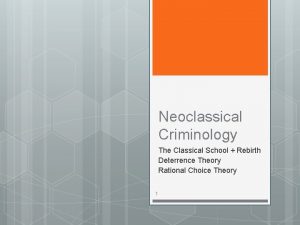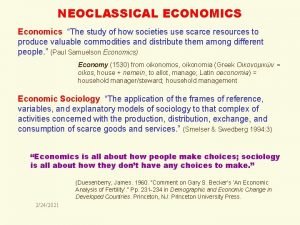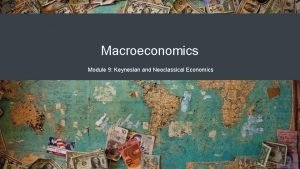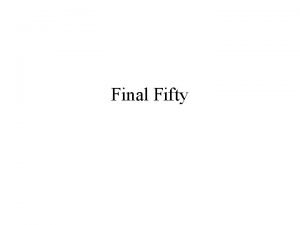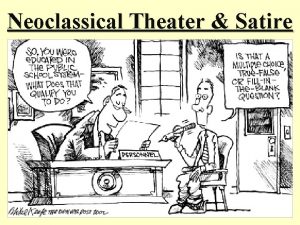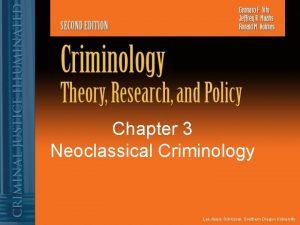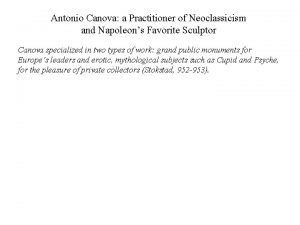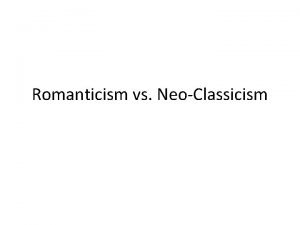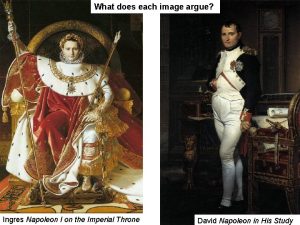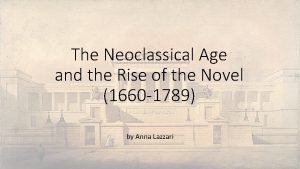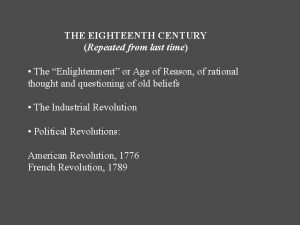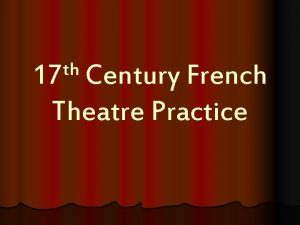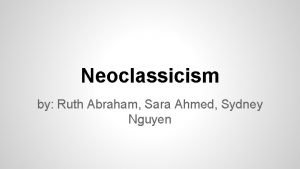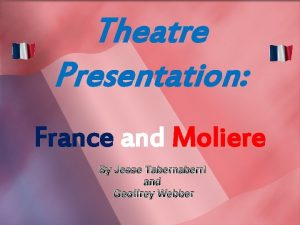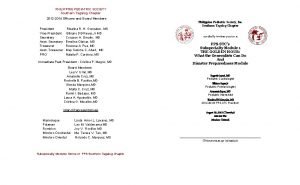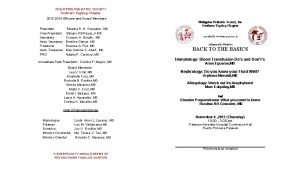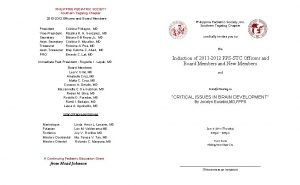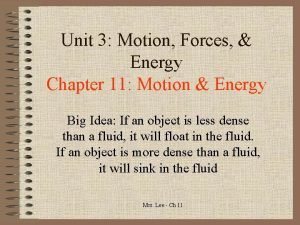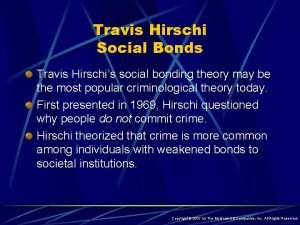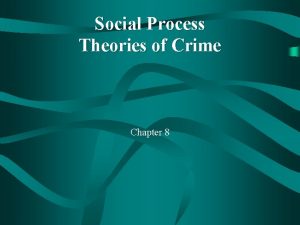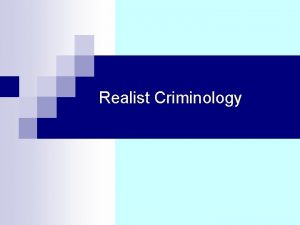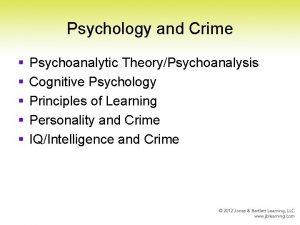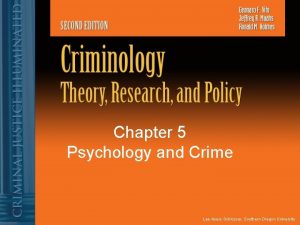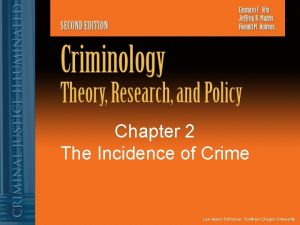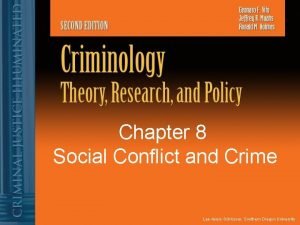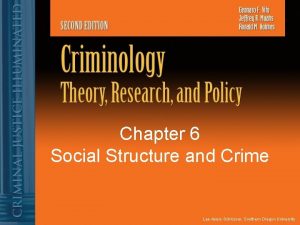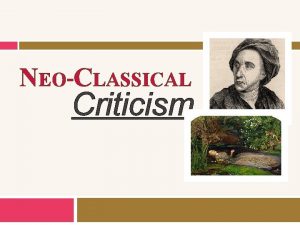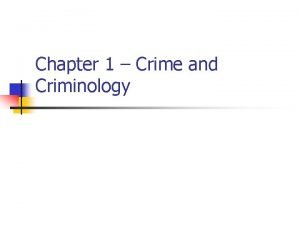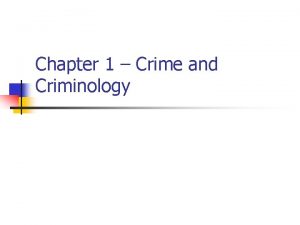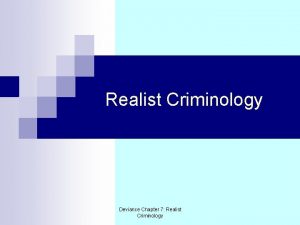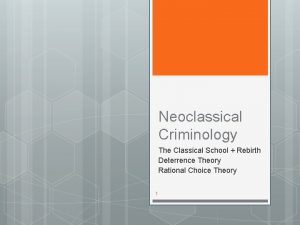Chapter 3 Neoclassical Criminology Lee AyersSchlosser Southern Oregon




















































- Slides: 52

Chapter 3 Neoclassical Criminology Lee Ayers-Schlosser, Southern Oregon University

Chapter Objectives (1 of 2) § Understand the social context of neoclassical theories and their rise to prominence in America during the 1970 s. § Grasp the central concepts in deterrence theory, including specific, general, and marginal deterrence. § Understand what the various empirical tests indicate about the empirical status of deterrence theory.

Chapter Objectives (2 of 2) § Know the central concepts in the routine activity and lifestyle approaches to criminal behavior. § Understand rational choice theory and its relation to deterrence. § Understand the policy implications of rational choice theory, including criminal justice policies and situational crime prevention.

You Are the Criminologist Can Drunk Driving Be Deterred? § Will increasing penalties for drunk driving reduce the behavior? § Do individuals considering driving after having consumed alcohol think about the consequences of their actions? § What effect does increasing punishment have on other kinds of criminal offenses?

Introduction to Neoclassical Theory § Builds on classical school theories § Emphasizes the role of the criminal justice system in crime prevention § Redefines classical school statements about deterrence § Contributes evidence through empirical testing

The Rise of Neoclassical Theory § 1800 s—Classical school of thought diminished; positive school gained popularity. § 1900 s—Sociological, biological, and psychological theories dominated. § 1970 s—Corrective goal of rehabilitation (in line with positive theories) was attacked and labeled a failure.

Get-Tough Movement (1 of 2) § Return to the use of prisons to punish and deter rather than rehabilitate § Recommended lengthy (more painful) prison terms, corporal punishment, and death penalty

Get-Tough Movement (2 of 2) § Examples § Chain gangs and old-time striped uniforms § Sheriff Joe Arpaio’s tent jails § Inmates wore pink underwear § No cigarettes or coffee § No recreational activities

Get-Tough Theory (1 of 6) 1. Punishment 2. Retribution 3. Just desserts 4. Incapacitation 5. Deterrence

Get-Tough Theory (2 of 6) 1. Punishment § Collective expression of society’s disapproval of criminal acts

Get-Tough Theory (3 of 6) 2. Retribution § Implies that criminals deserve to be punished because they have violated the legal system from which everyone benefits § Sends a message that crime will not be tolerated

Get-Tough Theory (4 of 6) 3. Just deserts § Punishment rightfully reflects the pain caused and earned by the criminal. § Sentences should be commensurate with the seriousness of the crime. § Criminals who committed the same type of crime should receive the same sentence.

Get-Tough Theory (5 of 6) 4. Incapacitation § Prevent future crime by locking up offenders § § § Results § § § Collective incapacitation—reduction of crime through a change in sentencing structure Selective incapacitation—control crime by sentencing individual offenders Moderate decreases in robbery, larceny, burglary Slight decrease in assault, homicide, rape Concern: fiscal limitations

Get-Tough Theory (6 of 6) 5. Deterrence § Reduce criminal behavior by sending a message to offender and society that crime doesn’t pay

Key Elements of Deterrence Theory (1 of 2) § Humans are rational, pleasure-seeking, pain-avoiding creatures. § People will engage in criminal behavior when it brings them pleasure and carries little risk of pain. § Formal punishment has the potential to reduce crime.

Key Elements of Deterrence Theory (2 of 2) § Assumptions § Humans are rational and hedonistic. § Levels of Deterrence § Specific (individual) § General (society at large) § Effective Punishment § Swift § Certain § Severe

Deterrence Theory § Levels of deterrence § General—sends a message to the public § Specific—offenders who feel the pain of punishment will be less likely to commit future crimes

Empirical Testing § Focuses on effects of marginal vs. absolute deterrence § Marginal deterrence: incremental increases in punishment to decrease crime § Absolute deterrence: formal system of punishments that deters criminal behavior

General Deterrence Research (1 of 5) § Increases in the certainty, severity, or swiftness of punishment; decreases crime overall. § Most studies examine one aspect (generally certainty or severity).

General Deterrence Research (2 of 5) § Death penalty (severity) § Majority of studies found no effect on homicide rates § Minority of studies found: § Brutalization effect (increase in violent crime) § Minor deterrent effect

General Deterrence Research (3 of 5) § Clearance rate (certainty) § Odds of getting caught § Majority of studies found no effect on crime § Minority of studies found slight decrease with the clearance rate reaching a tipping point

General Deterrence Research (4 of 5) § Police experiments § Kansas City Preventative Patrol—double police had no effect on crime § Moderate, short-lived reductions in crime with: § Directed patrols § Saturation patrols § Zero-tolerance policing

General Deterrence Research (5 of 5) § Perceptions Research (certainty and severity) § Those who believe that punishment is severe and certainty is high are less likely to engage in crime. § Experiential effect—over time, offenders lower their estimates of severity and certainty.

Specific Deterrence Research (1 of 4) § Offenders who are punished will be less likely to commit future crimes. § Recidivism studies show generally a 60– 75% recidivism rate within 3 years.

Specific Deterrence Research (2 of 4) § Probation vs. intensive programs § Correctional boot camps § Intense supervision probation (ISP) § No effect on criminal behavior § “Scared Straight” (television documentary) § No positive effect on criminal behavior § Actually increases crime

Specific Deterrence Research (3 of 4) § Police arrest experiments § Early studies had mixed findings. § Initial study showed that arresting domestic violence perpetrators reduced future incidents. § Later studies showed this is only applicable to those with conventional social ties (e. g. , employment) and desire for social conformity.

Specific Deterrence Research (4 of 4) § Police arrest experiments § Indirect costs of arrest § Commitment costs—future opportunities § Attachment costs—loss/harm personal relationships § Stigma—negative reputation

Celerity § Swiftness of punishment § Animal studies—more effective than delayed punishment § Human studies—celerity does not reduce recidivism § Cognitive ability to link delayed punishment with behavior § Criminal justice process reminds offenders of their crime

Summary of Deterrence Theory (1 of 2) § Swift, certain, severe punishment will reduce crime for: § General public (general deterrence) § Individual offender (specific deterrence) § Deterrence theory focuses on formal punishment (arrest, prison) rather than informal controls.

Summary of Deterrence Theory (2 of 2) § Certainty is the most effective element in deterrence. § Deterrence effects are not very strong. § Possible flaws: § People may not be completely rational. § Empirical testing focuses on marginal increases rather than the absolute deterrence. § Criminal justice system is limited in a democratic society.

Rational Choice Theory (1 of 7) § Individuals will weigh the costs and benefits of crime. § Individuals will choose criminal behavior when the benefits outweigh costs.

Rational Choice Theory (2 of 7) § Includes: § § Formal sanctions—arrest, prison Informal sanctions—shame, job loss Tangible benefits—money, property Intangible benefits—thrill, respect

Rational Choice Theory (3 of 7) § Broader than deterrence theory (multiple costs and rewards) § Criminals not purely rational § Criminals bound by factors such as: § Time § Cognitive ability § Moral values

Rational Choice Theory (4 of 7) § Cornish and Clarke’s rational choice theory § Multistage process over a long period of time § Rationality (a pure cost-benefit analysis) is limited § Focus on situational factors that influence criminal decision making

Rational Choice Theory (5 of 7) § Criminal decision making § Criminal involvement—whether to engage in crime in general § How, when, and where to commit a crime

Rational Choice Theory (6 of 7) § Rational choice model for burglary § Background factors (upbringing) § Previous learning experience (direct and observational experience with crime) § Generalized needs (money, sex, excitement) § Evaluation of solutions (degree of reward and punishments) § Solutions (legal or illegal)

Rational Choice Theory (7 of 7) § Criticism § Little evidence of pure rational decision making § Respondents motivated by reward but underestimated the costs and risk of punishment § Limiting factors borrowed from competing crime theories § Many factors constrain/limit rational decision making

Routine Activities Theory (1 of 4) § Shares some similarities with deterrence and rational choice theory § Assumes that offenders make rational assessments about crime targets § Shifts attention away from offenders and toward the victims of crime

Routine Activities Theory (2 of 4) § Developed by Lawrence Cohen and Marcus Felson § For any crime to occur, you must have: § Motivated offender § Suitable target § Absence of capable guardian

Routine Activities Theory (3 of 4)

Routine Activities Theory (4 of 4) § Suitable target § § Value Inertia Visibility Access

The Lifestyle Approach (1 of 3) § Developed by Hindelang, Gottfredson, and Garofalo § Certain groups, by virtue of their lifestyle, place themselves at greater risk for victimization.

The Lifestyle Approach (2 of 3) § Lifestyle—the patterned way in which people distribute their time and energies across a range of activities § Greater chance of victimization with: § More time away from home (greater target visibility or exposure to offenders) § Fewer household members (lack of guardians) § Many aspects of lifestyle not easily altered

The Lifestyle Approach (3 of 3) § Extra precautions—do not necessarily reduce risk § Adolescents—delinquent behavior linked to increased risk of victimization § Inmate studies—more time in structured, supervised activities leads to less risk

Police Implications: Situational Crime Prevention (1 of 5) § Opportunity theories share a focus on situational factors § Rational choice theory § Routine activities theory § Lifestyle approach § Policy goal: reduce opportunity for crime by focusing on the context

Police Implications: Situational Crime Prevention (2 of 5) § Crime prevention through environmental design (CPTED) § § Designing an environment to prevent crime Natural strategies (design, layout) Organized strategies (security guards, police) Mechanical strategies (alarms, cameras)

Police Implications: Situational Crime Prevention (3 of 5) § Crime prevention through environmental design (CPTED) § Should occur as consequence of everyday life § Examples: § Better street lighting § Access control and surveillance

Police Implications: Situational Crime Prevention (4 of 5) § Criticism § Crime displacement—improving the environment in one place may simply shift crime to a different location. § All crime affects society at large. § Environmental design can control some crimes, but it doesn’t solve underlying problems.

Police Implications: Situational Crime Prevention (5 of 5) § Situational crime prevention is more popular in other countries than in the United States § Safe City program

Conclusion (1 of 3) § Neoclassical theories attractive because they give the impression of being tough on crime § Incapacitation and deterrence not proven effective § Large prison population has negative consequences § Crime control policies—focus on increasing certainty of punishment (rather than severity) § Flaws: § Not all criminals are rational. § Potential for crime prevention is limited by legal and social controls.

Conclusion (2 of 3) Theory Authors Summary Deterrence Beccaria, Swift, certain, Bentham and severe formal punishment reduces crime. Rational Choice Cornish, Offenders Clarke rationally decide how to engage in crime. Policy Implications Use criminal justice system to increase certainty, severity, and celerity. Incapacitation for those who are not deterred. Situational crime prevention

Conclusion (3 of 3) Theory Authors Routine Activities Cohen, Felson Summary Convergence of: Motivated offender Suitable target Lack of capable guardian Policy Implications Situational crime prevention Lifestyles Hindelang, Certain groups of Situational Approach Gottfredson, people have higher crime risk of victimization prevention Garofalo due to their lifestyles.
 Neoclassical criminology
Neoclassical criminology Crime control policies
Crime control policies Southern oregon university human resources
Southern oregon university human resources Kevin lee yates
Kevin lee yates Neoclassical period in english literature
Neoclassical period in english literature Neoclassical art vs romanticism
Neoclassical art vs romanticism Metaphysical poetry characteristics
Metaphysical poetry characteristics British neoclassical period
British neoclassical period What is comedy of manners
What is comedy of manners Difference between classical theory and neoclassical theory
Difference between classical theory and neoclassical theory Neoclassical economics
Neoclassical economics Neoclassical
Neoclassical Classical economics vs keynesian
Classical economics vs keynesian The apotheosis of homer
The apotheosis of homer Y no hai remedio khan academy
Y no hai remedio khan academy Counterpart theory of the positivist school of criminology
Counterpart theory of the positivist school of criminology Neoclassical satire
Neoclassical satire French neoclassical theatre
French neoclassical theatre Neoclassical theory of crime
Neoclassical theory of crime Neoclassical growth theory vs. endogenous growth theory
Neoclassical growth theory vs. endogenous growth theory Canova neoclassical or romantic
Canova neoclassical or romantic Neoclassicism portraits
Neoclassicism portraits Neoclassicism features
Neoclassicism features Periods of literature timeline
Periods of literature timeline Charles barry neoclassical or romantic
Charles barry neoclassical or romantic Characteristics of neoclassical sculpture
Characteristics of neoclassical sculpture Neoclassical poets
Neoclassical poets Portrait de monsieur bertin ingres
Portrait de monsieur bertin ingres The neoclassical age
The neoclassical age Third of may 1808
Third of may 1808 Racinell
Racinell Describe neoclassical and romantic period
Describe neoclassical and romantic period Romanticism and neoclassicism
Romanticism and neoclassicism Neoclassical definition
Neoclassical definition Neoclassical definition
Neoclassical definition Neoclassical poetry
Neoclassical poetry The death of marat medium
The death of marat medium Neoclassical vs romanticism
Neoclassical vs romanticism French neoclassical playwrights
French neoclassical playwrights Chapter 24 southern africa
Chapter 24 southern africa Pps southern tagalog chapter
Pps southern tagalog chapter Pps southern tagalog chapter
Pps southern tagalog chapter Pps southern tagalog chapter
Pps southern tagalog chapter Chapter 3 lesson 4 the southern colonies
Chapter 3 lesson 4 the southern colonies Chapter 11 section 3 motion and force answer key
Chapter 11 section 3 motion and force answer key Examples of internal forms of social control
Examples of internal forms of social control Wjec criminology unit 3 notes
Wjec criminology unit 3 notes Criminology unit 4 crime and punishment
Criminology unit 4 crime and punishment Criminology unit 4 quiz
Criminology unit 4 quiz Social bond theory criminology
Social bond theory criminology Social process theories criminology
Social process theories criminology James q wilson right realism
James q wilson right realism Psychoanalytic theory criminology
Psychoanalytic theory criminology
